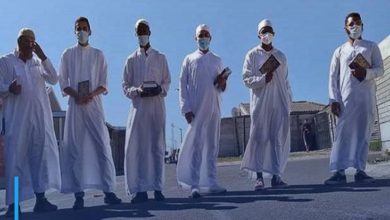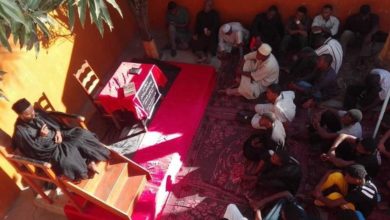Analytical article on global media network: How Shia Islam came to Tanzania

The non-profit media network ‘The Conversation’ introduced its followers from around the world to the eternal issue of Ashura and the ceremonies of the Arbaeen Pilgrimage of Imam Hussein (peace be upon him), which is revived in the holy city of Karbala every year.
The network published, Tuesday, 13th of September, a lengthy article by researcher (Mara Lichtman), associate professor of anthropology and Islamic studies at Michigan State University, entitled, ‘How Shia Islam reached Tanzania, and Ashura processions became an annual tradition’.
Excerpts from the article translated by Shia Waves News Agency, the researcher begins her talk by referring to the Arbaeen Pilgrimage of Imam Hussein (peace be upon him), in which millions of pilgrims from different countries of the world participate, addressing the injustice that befell him, his family and his companions (peace be upon them) in the Battle of Karbala in 61 AH.
“Scholars have long been fascinated by the variety of emotionally-inducing cultural performances that occur during the months of Muharram and Safar,” Lichtman says.
“Shias have adapted the remembrance to link Islamic history with the present and to highlight the need for social justice for today’s Muslim population.”
“As a researcher of Shia communities in Africa, I have studied processions in northern Tanzania, and they are usually scheduled according to the Islamic lunar calendar on the ninth and tenth days of Muharram.”
She explains, “In Tanzania, Shia Islam first arrived with the trading community of Al-Khawaja, a sect from India that converted from Hinduism to Islam. Al-Khawaja began settling in East Africa in the nineteenth century due to drought, famine and religious persecution in their homeland.”
She adds that “in the year 1986, the first Shia organization was established in Tanzania, and its activity has grown little by little in introducing the Shia sect, and its headquarters is now located in the outskirts of the city of Arusha in northern Tanzania, and it has developed into a large Shia network with African leadership.”
Regarding the features and manifestations of the months of Muharram and Safar, the researcher shows that “the Shia Khawaja have been holding Ashura processions for the past century, and Haji Ali Natho, the old head of the Shia Khawaja sect in Zanzibar, had asked the British colonial government to make the tenth day of Muharram an official holiday, and it was granted in the year (1920 AD).”
She points out that “the Ashura processions became an annual tradition in Zanzibar and Tanga, and later gained great popularity in urban areas with the construction of mosques and Husseiniyahs, such as Dar es Salaam, the coastal capital of Tanzania and the main commercial center in Arusha, and during Muharram, roads are closed and a security atmosphere is provided for mourning processions.”
She adds that “the mourning processions began to attract people to the Karbala tragedy, and that Imam Hussein (peace be upon him) is a source of inspiration for humanity in its pursuit of justice and equality.”
Lichtman also points out that, “other manifestations of the Shias are the establishment of food tables, blood donation, and other religious rituals. Mourners, dressed in black, hold black banners on which phrases written about the virtues of Imam Hussein in Swahili. Women and children have headbands with the inscription: “Labbaik Ya Hussein” and “I am proud that I am Hussaini.”
The participating religious leaders also give speeches to remind of what happened to the Master of Martyrs, peace be upon him.
She also asserts that “the practices and rituals of Shias in Tanzania are protected by the government, as peaceful gatherings to revive the Cause of Imam Hussein (peace be upon him).”






